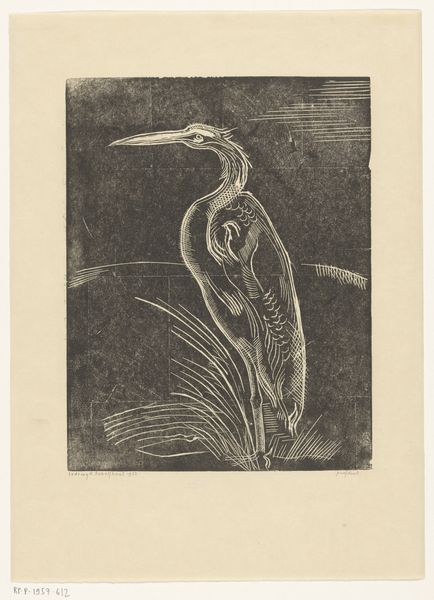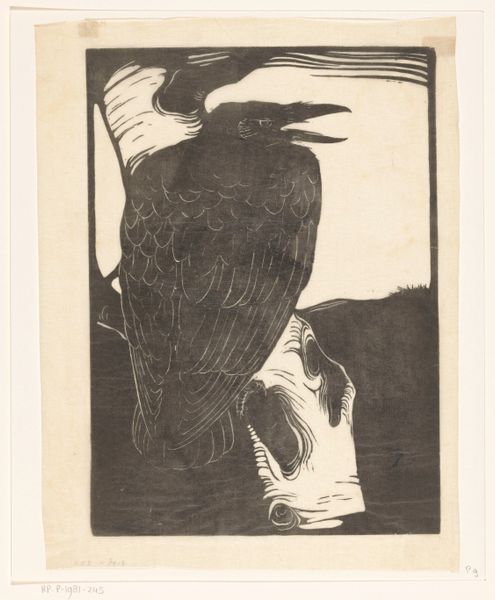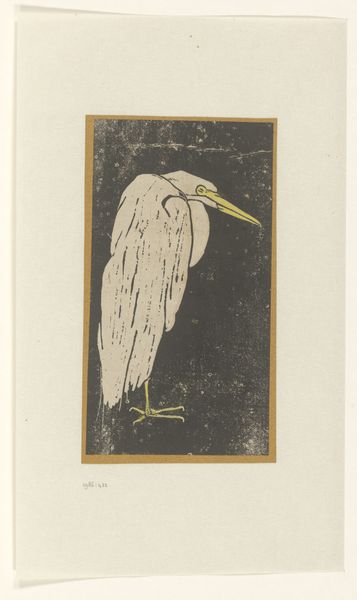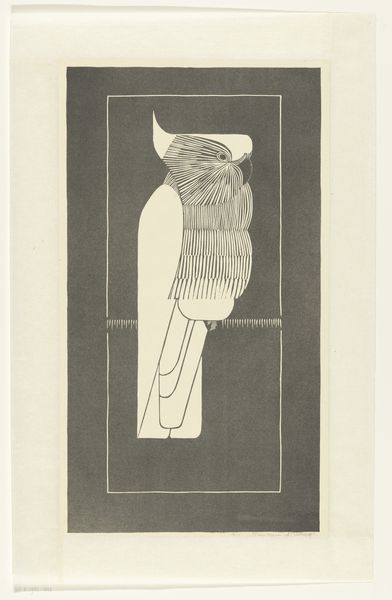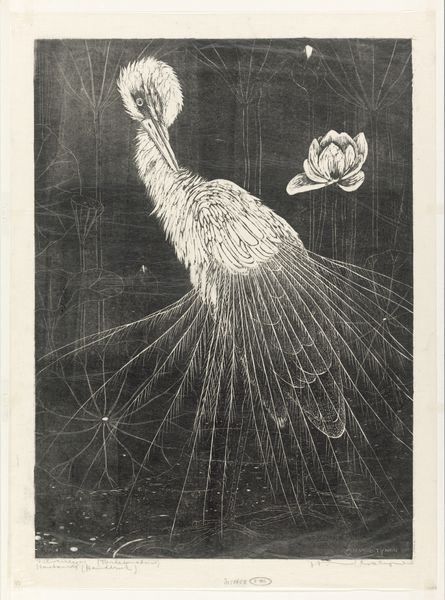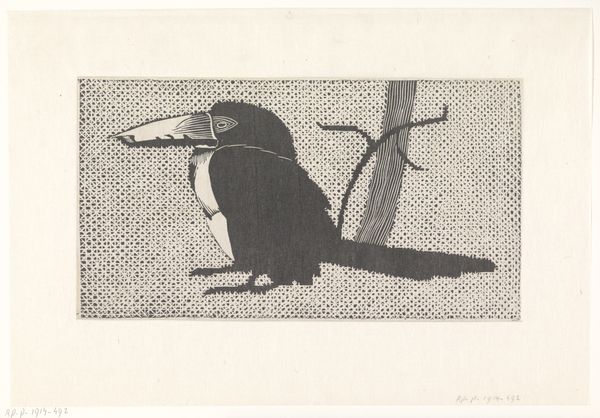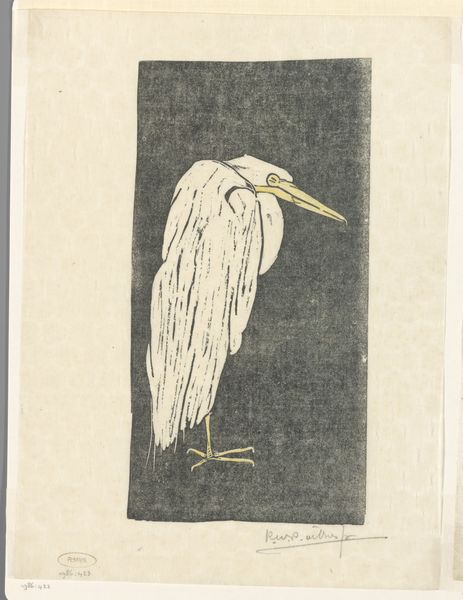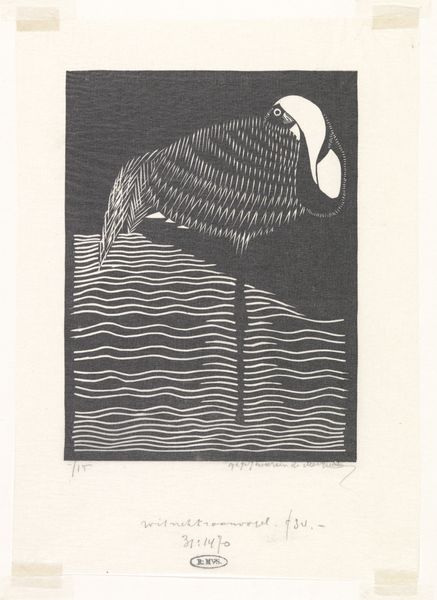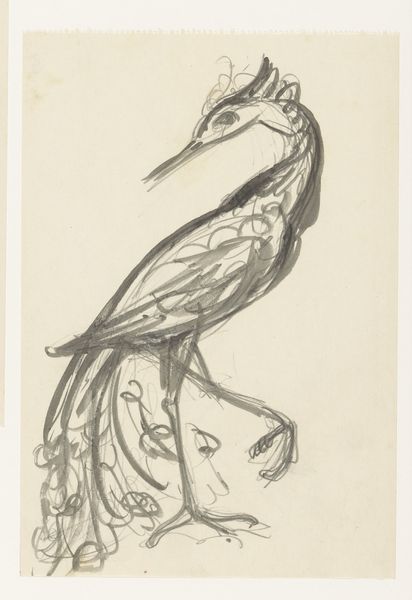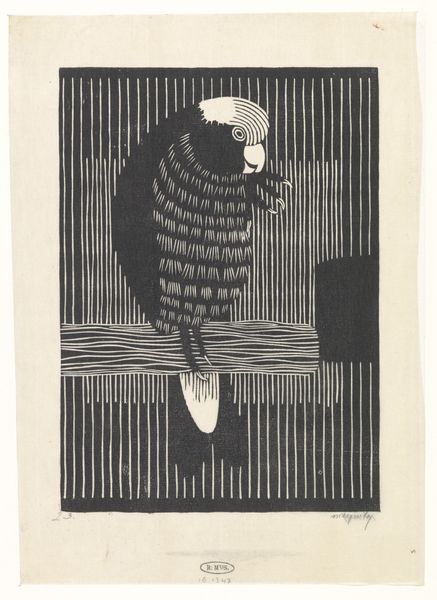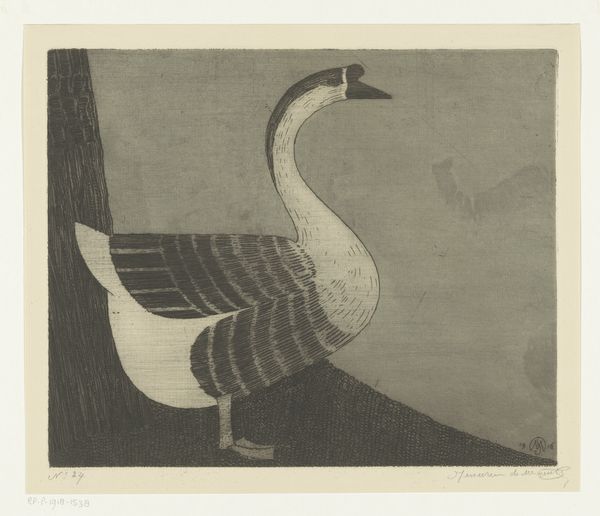
print, woodcut
#
portrait
# print
#
woodcut
#
abstraction
#
line
#
symbolism
Dimensions: height 372 mm, width 288 mm
Copyright: Rijks Museum: Open Domain
Editor: Here we have Samuel Jessurun de Mesquita's "Zilverreiger," created in 1913. It's a striking woodcut print. The stark contrast really grabs your attention. I’m curious about your interpretation. What material or social processes do you think shaped its creation? Curator: It’s interesting you immediately went to the material! I see the dominance of the woodcut medium as crucial. Think about the process – the labor involved in carving, the deliberate act of removal. It wasn’t painting; it wasn't building up but taking away. What does that reductive process say about the image of the heron itself? Editor: That’s a good point. The simplicity seems very deliberate, a choice rather than a limitation. Was this carving away a common process? Was it linked to certain political ideas at the time? Curator: Absolutely. The early 20th century saw a rise in printmaking’s accessibility and democratic potential. Woodcuts specifically, due to their relative simplicity, were embraced by artists interested in reaching a wider audience, conveying messages directly without the elitism associated with painting. Were there limitations on his distribution as a Jewish man? Editor: So, the medium itself challenges notions of artistic exclusivity and economic power. Is the stylized portrayal of the heron a comment on industrialization's impact on the natural world, turning something organic into an almost manufactured object? Curator: Precisely! The hard lines and abstracted form contrast sharply with a traditional naturalistic representation. And consider the paper itself: its sourcing, its production. Every element speaks to systems of labor and value. This isn't just about seeing a heron; it is about considering how art is produced, consumed, and circulated within a specific society. Editor: This has really opened my eyes to considering how material and production are inseparable from the meaning. It’s not just a pretty picture. Curator: Exactly. Examining the means of creation provides a richer understanding of the artist's intent and the artwork's place within its time.
Comments
No comments
Be the first to comment and join the conversation on the ultimate creative platform.
